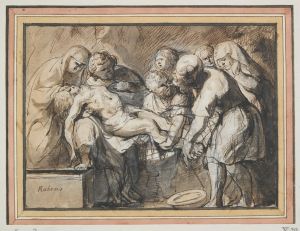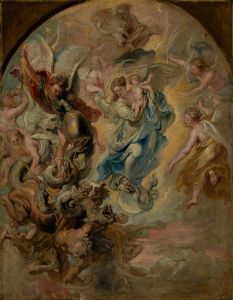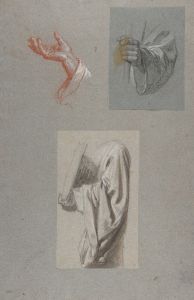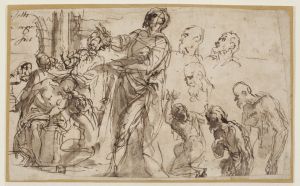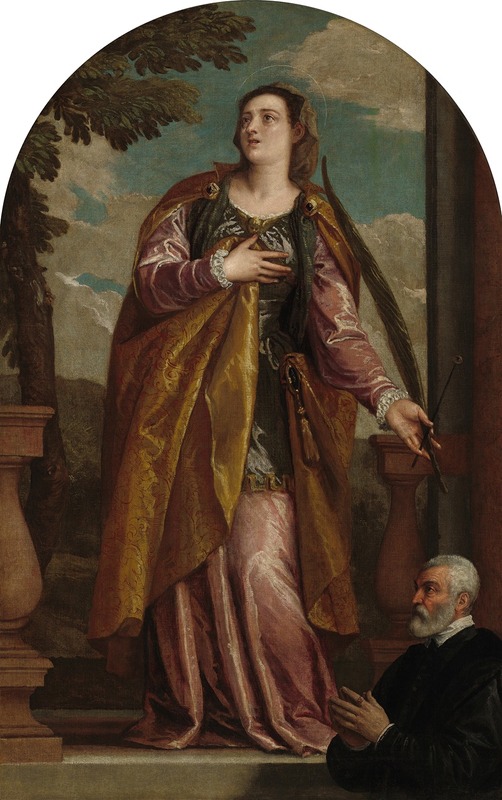
Saint Lucy and a Donor
A hand-painted replica of Paolo Veronese’s masterpiece Saint Lucy and a Donor, meticulously crafted by professional artists to capture the true essence of the original. Each piece is created with museum-quality canvas and rare mineral pigments, carefully painted by experienced artists with delicate brushstrokes and rich, layered colors to perfectly recreate the texture of the original artwork. Unlike machine-printed reproductions, this hand-painted version brings the painting to life, infused with the artist’s emotions and skill in every stroke. Whether for personal collection or home decoration, it instantly elevates the artistic atmosphere of any space.
"Saint Lucy and a Donor" is a painting by the renowned Italian Renaissance artist Paolo Veronese, known for his large-scale historical and religious works. Veronese, whose real name was Paolo Caliari, was born in 1528 in Verona, Italy, and became one of the leading figures of the Venetian school of painting. His works are celebrated for their vibrant color, intricate compositions, and the grandeur of their architectural settings.
The painting "Saint Lucy and a Donor" is an example of Veronese's skill in combining religious themes with portraiture, a common practice during the Renaissance when patrons often commissioned artworks that included their likeness alongside saints or religious figures. Saint Lucy, the central figure in this painting, is a Christian martyr who is venerated as a saint in both the Roman Catholic and Orthodox traditions. She is often depicted holding a palm branch, a symbol of martyrdom, and sometimes with her eyes on a plate, referencing the legend of her eyes being gouged out before her execution.
In this painting, Veronese presents Saint Lucy with a donor, who is likely the patron who commissioned the artwork. The inclusion of donors in religious paintings was a way for patrons to express their piety and secure a place in the spiritual narrative of the artwork. The identity of the donor in this painting is not definitively known, as is often the case with many Renaissance works where records of patronage have been lost or were never documented.
Veronese's use of color and light in "Saint Lucy and a Donor" exemplifies his mastery of the Venetian colorito technique, which emphasizes the use of color to define form and convey emotion. The painting likely features the rich, luminous colors typical of Veronese's palette, contributing to the overall sense of opulence and divine presence.
The composition of the painting is carefully balanced, with Saint Lucy occupying a prominent position, drawing the viewer's eye to her serene expression and the symbolic attributes she holds. The donor is typically portrayed in a position of humility, often kneeling or standing in a less dominant position, signifying reverence and devotion.
"Saint Lucy and a Donor" reflects the broader cultural and religious context of the 16th-century Venetian Republic, where art was deeply intertwined with expressions of faith and social status. Veronese's works often included elaborate architectural elements and luxurious details, reflecting the wealth and sophistication of Venice during this period.
While specific details about the provenance and current location of "Saint Lucy and a Donor" are not readily available, Veronese's works are held in high esteem and can be found in major art collections and museums worldwide. His paintings continue to be studied and admired for their technical brilliance and their ability to convey complex religious and human themes with elegance and clarity.





